After an announcement in March this year, Snap Inc. (parent to Snapchat), unveiled a new standalone app at their Partner Summit, for iOS and Android to give creators the ability to edit, upload and share their videos to Snapchat directly as well as being given the option to export. See below for the original Tweet and Apple-like trailer showing the app’s main features:
Introducing Story Studio! An easy-to-use app that gives creators the tools to make awesome videos on their phone that could then be shared anywhere. #SnapPartnerSummithttps://t.co/OWwwCybQ1Q pic.twitter.com/FG8gwY115K
— Snapchat (@Snapchat) May 20, 2021
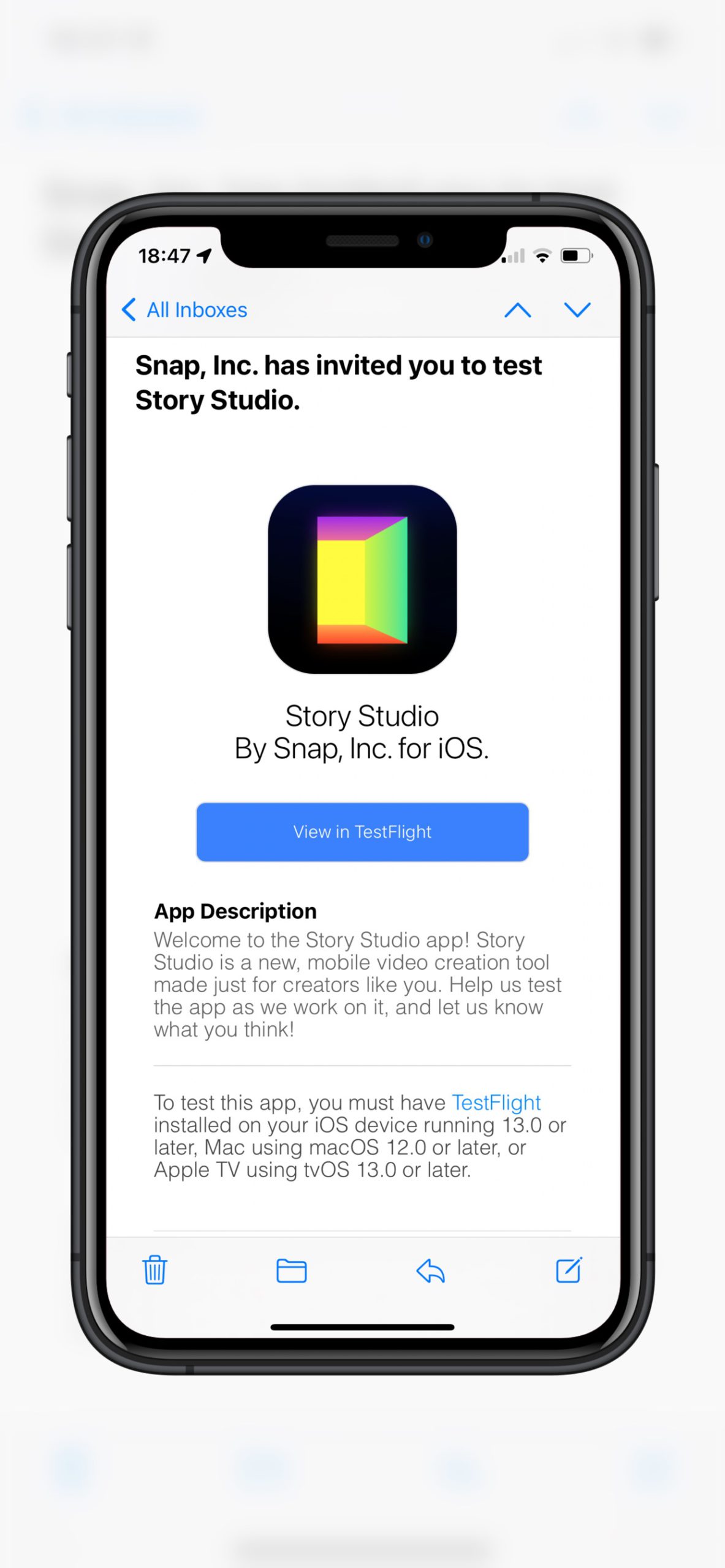
Emails have started to reach inboxes about beta testing the app on devices via Apple’s TestFlight service. This is the stage which comes before being released to the public, however given the version number is 0.13.3 – it is evident that there is still some testing to go before this happens. Also via TestFlight, version 0.10.1 is available and according to the patch notes, brought most of the fundamental features before being updated.
This version introduces the ability to use Create Sounds feature in Sounds UI in the audio tool; apply fade in/out effects for video layer and audio tracks; and correctly reports attribution for the app, lenses, and music when sharing directly to Snapchat.
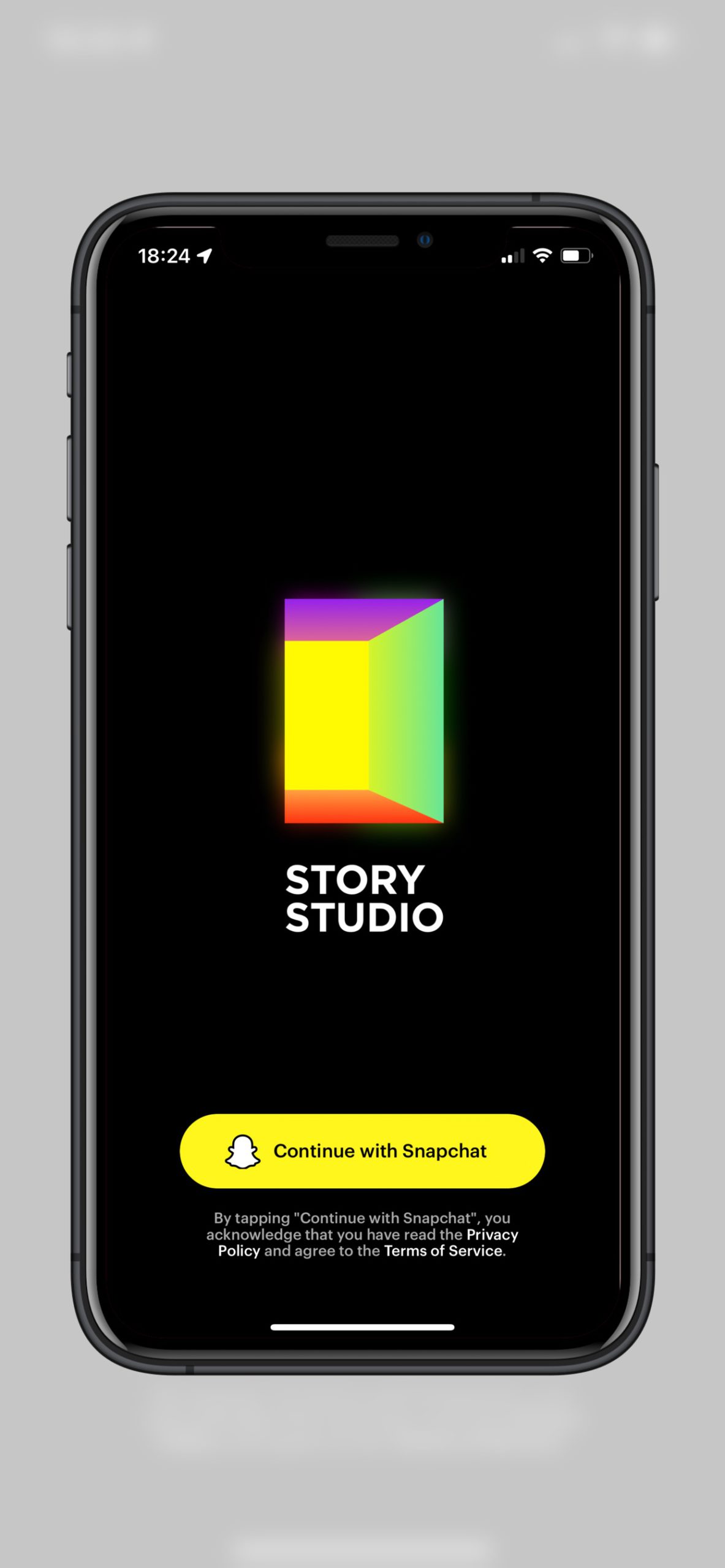
From initial viewing, this is a keen plan to get users interacting on Snapchat’s ‘Spotlight’ feature (a TikTok competitor) in which users share videos on a public feed that other users can like and share content. This also comes after Snap implemented a creator revenue program that gives money back to users who publish popular content.
The Process
Upon opening the Story Studio app, a modern and sleek splash screen is shown asking users to connect their Snapchat accounts. This then opens the Snapchat app and has the user confirm the connection to Story Studio.
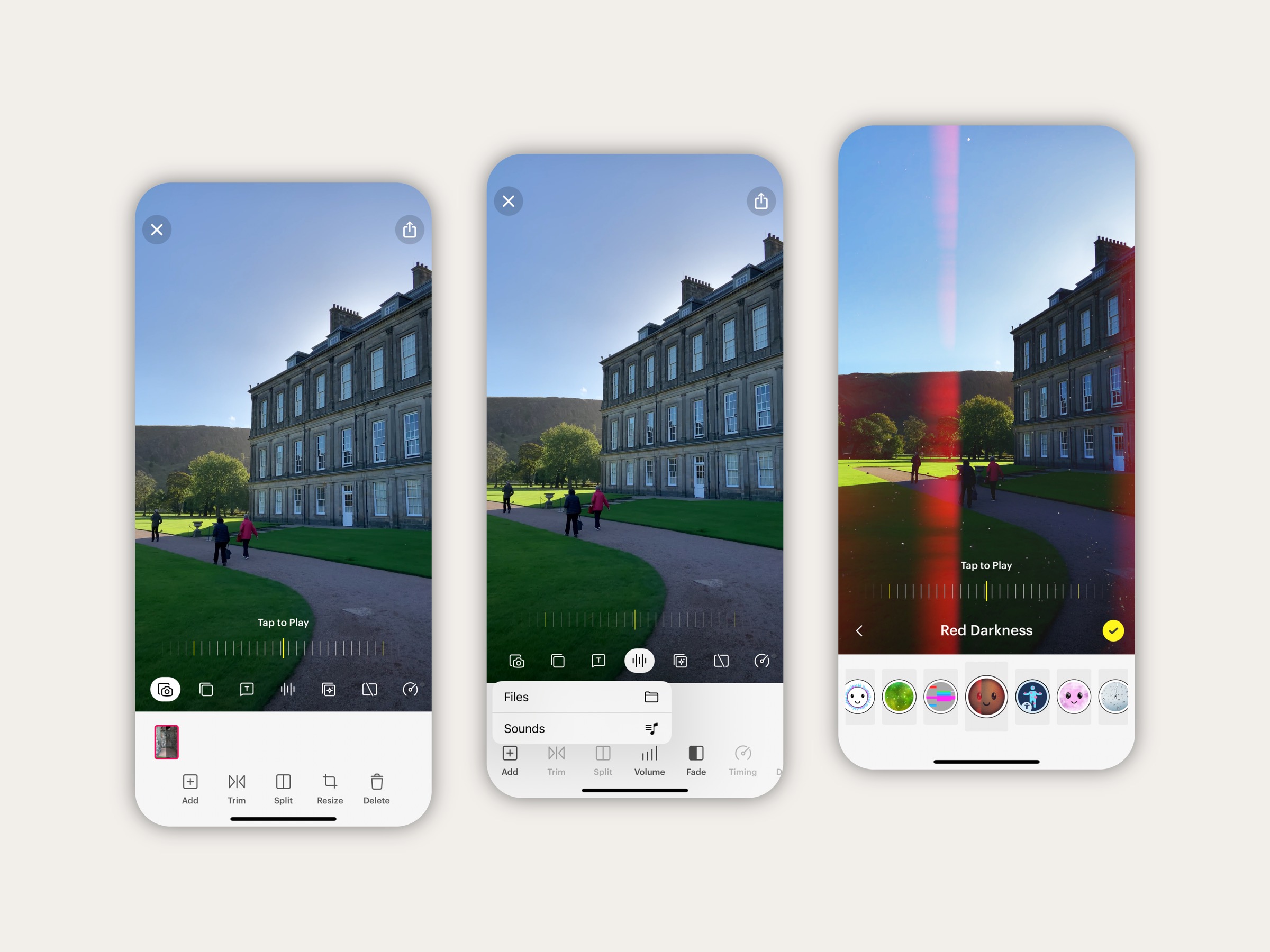
After this is completed, you are met with the main interface of the app. For new users, this may look slightly barren, however a helpful tooltip in the background of the app guides users to press the “+” button in order to add various pictures and videos into a timeline straight from the native iOS gallery.
Once this is done, a timeline display and a UI similar to Videoleap displays a range of tools to help edit your video. Add, Trim, Split, Resize and Delete are all features offered on the main taskbar at the bottom of the screen, allowing for editing of clips on a basic level.
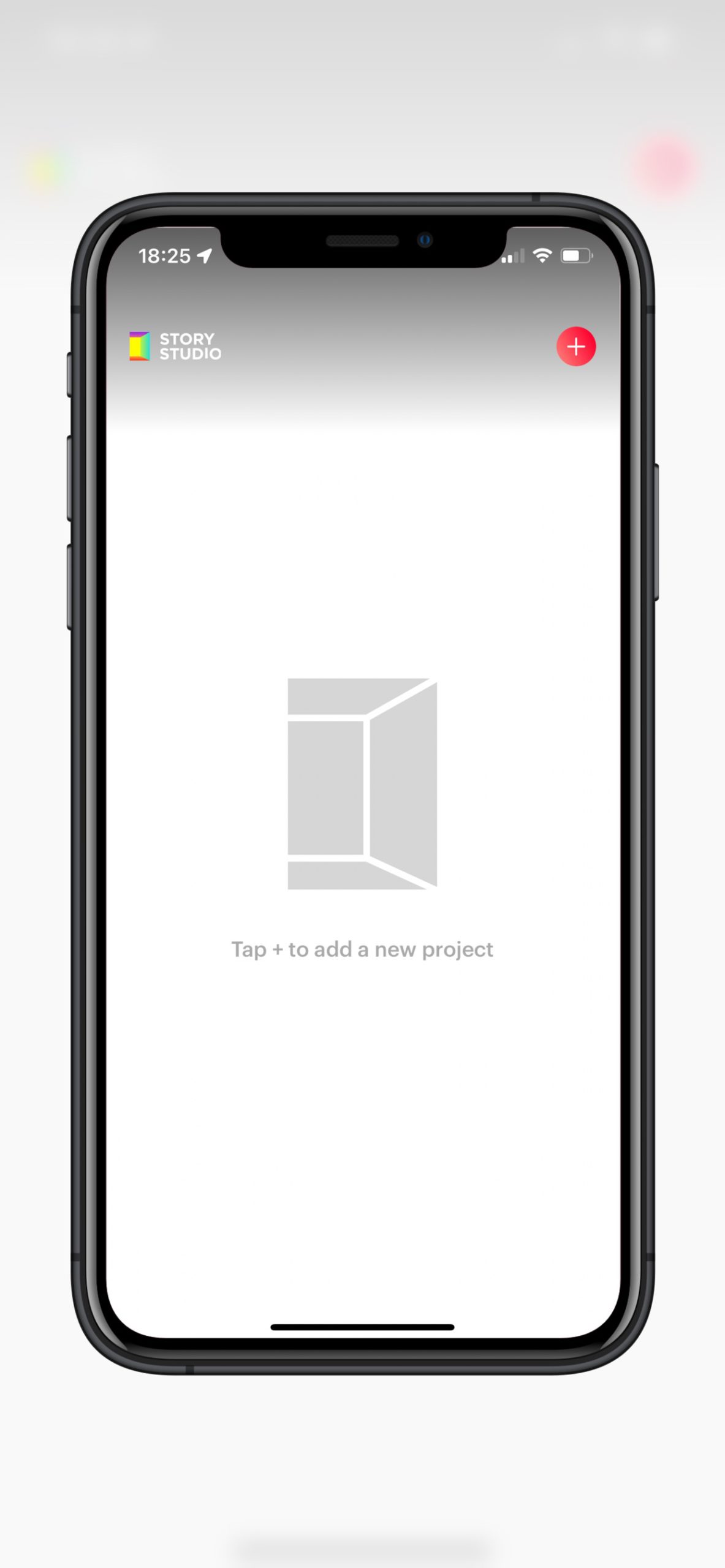
For more in-depth options, Snapchat’s Story Studio has categories for Layers, Captions, Audio, Lenses, Transitions and Speed controls to allow for the individual editing of clips.
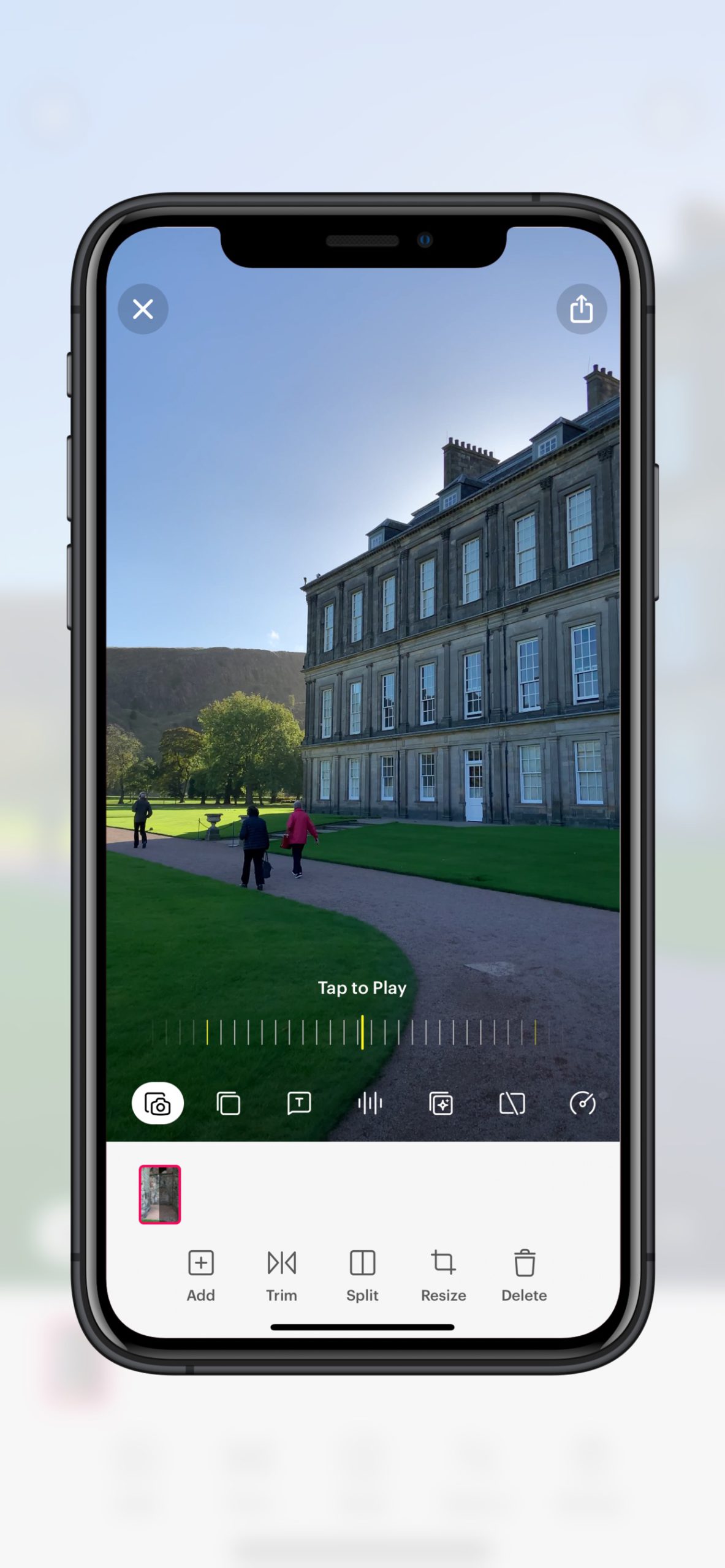
Layers:
Allow for elements of media and text to be placed or arranged to the user’s liking, similar to how Photoshop has layers for image editing.
Captions:
Gives the option to add text to a video or to add captions for speech in videos (a popular trend for creators to include now, popularized by TikTok) with a range of fonts and adequate size controls as well as alignment and color selection which is similar to Snapchat’s current interface.
Audio:
Audio from Snapchat’s ever-growing library can be added which includes many popular tracks as well as saved audio from Spotlight clips and Favorites. In addition to this, audio files from iCloud Drive can also be added into the timeline as a custom audio option.
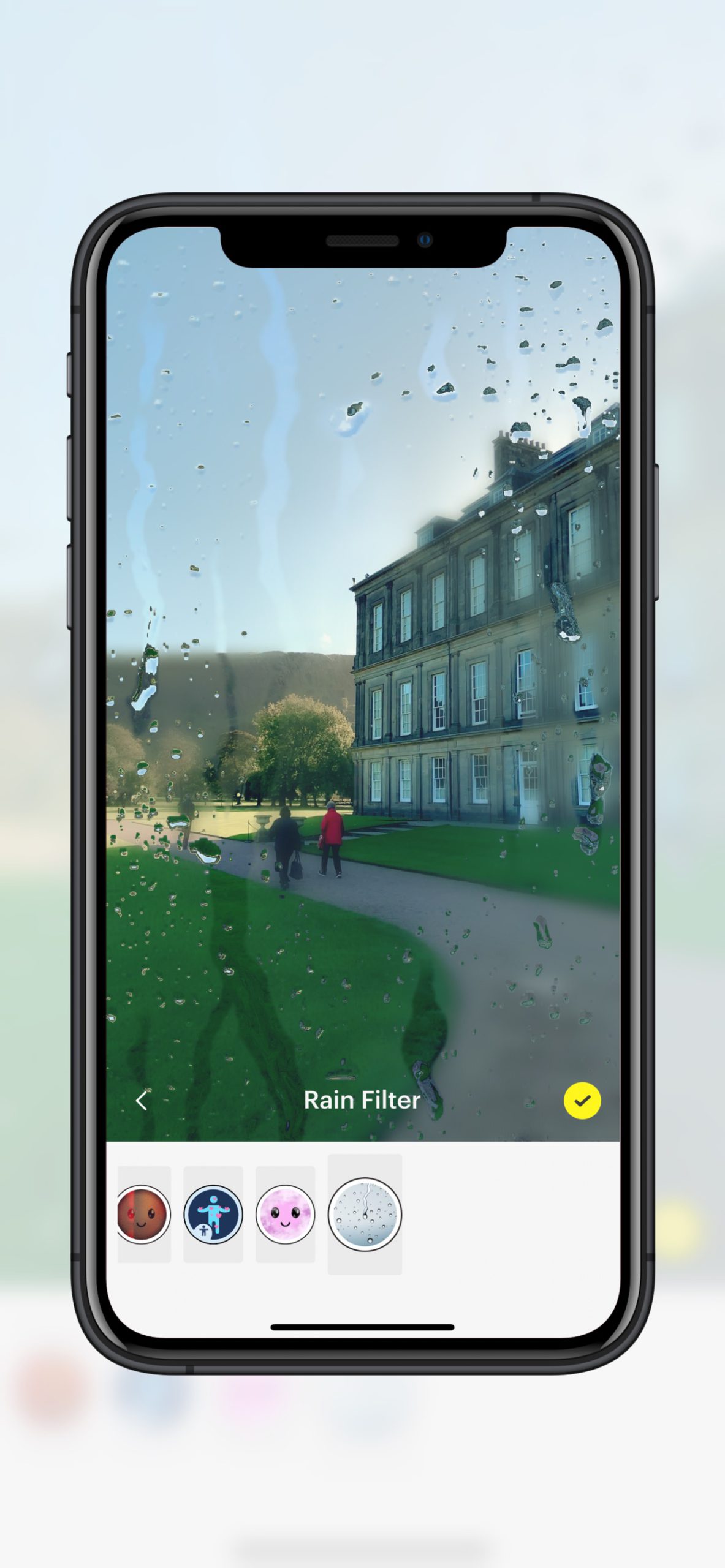
Lenses:
Snapchat’s famous lenses can also be added to clips placed into the timeline, however aesthetics may vary! It is likely that effects will be able to be submitted by users via Snapchat’s existing Lens Studio for Desktop to allow creators to expand their portfolios.
Transitions:
Transitions can only be applied on timelines with multiple media added to them. The current transitions available resemble that of Powerpoint, however there are a wide range to use for basic content creation.
Speed:
Story Studio also allows for speed editing of clips, giving creative freedom to those who want to slow-down or speed up their content before exporting.
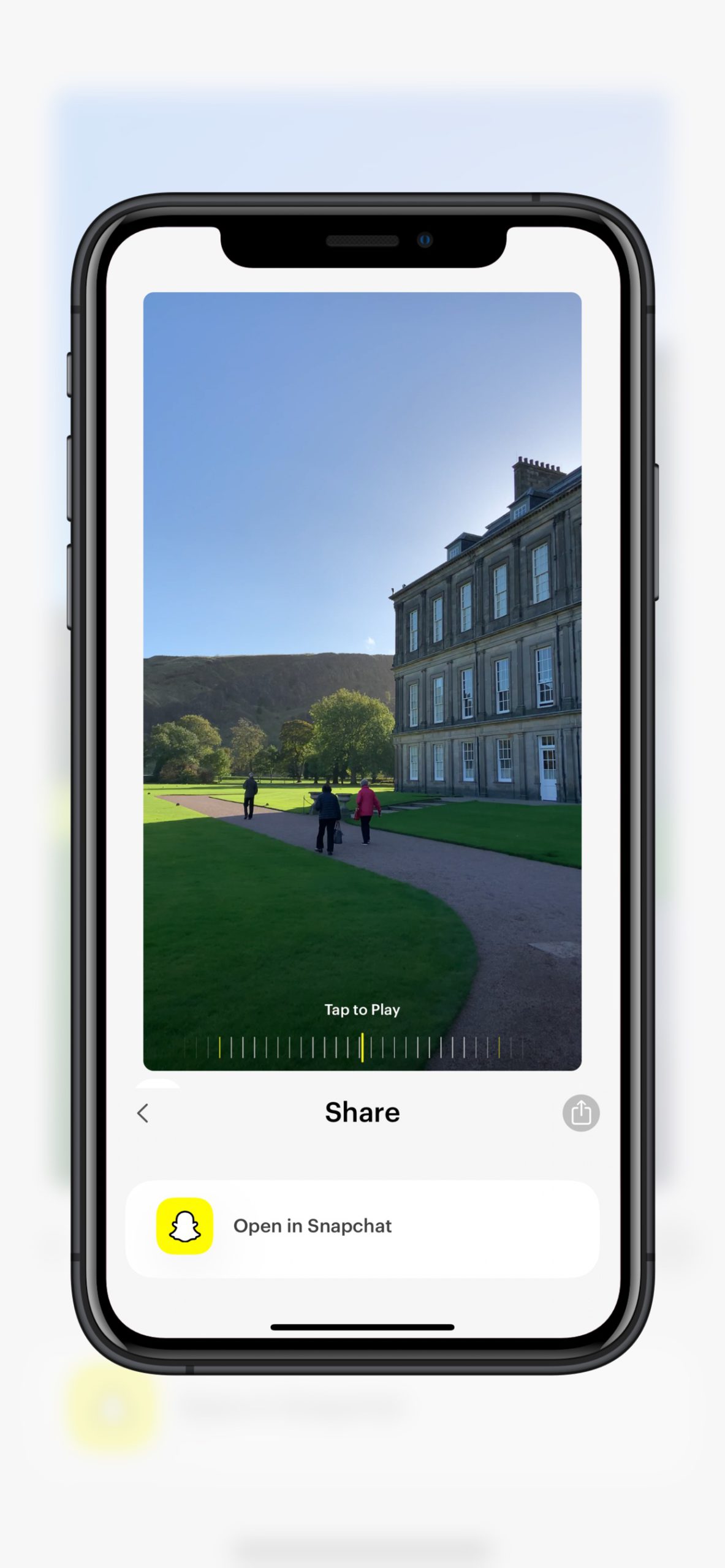
Exporting:
After finishing editing, the export button brings you to an export window to show your final project alongside a single button to “Open in Snapchat” to help social shares go directly to their platform. Tucked behind a subtle upload button, options for iOS’s Share Sheet are available to save the clip locally or to even open the clip in other apps – such as TikTok!
Impressions:
The idea for this app is nothing new – apps such as Videoleap offer features such as this in standalone applications, however popular social media apps are starting to adopt native editors such as that of TikTok’s or Instagram’s Story editor. However, with this being said, it is a surprise to see Snap taking this move, rather than locking users in to only submitting to Snap services. It is even more interesting to see that Story Studio doesn’t even include watermarks like TikTok or any in-app purchases (yet) that would offer a “freemium” model for Snap Inc. to earn revenue from.
Takeaways:
Snap definitely has put creators first in this new venture, and all plugs and references to Snapchat and Spotlight are completely justifiable given the fact that it doesn’t appear to be another data-scraping-cover-up unlike current offerings from industry conglomerates: TikTok, Facebook (Meta) and Google.






